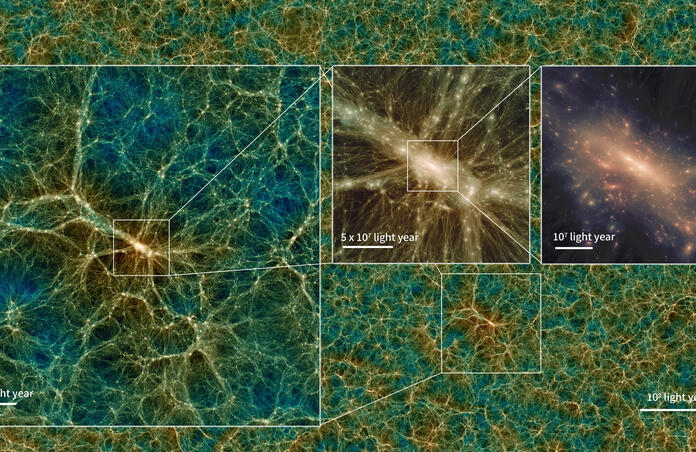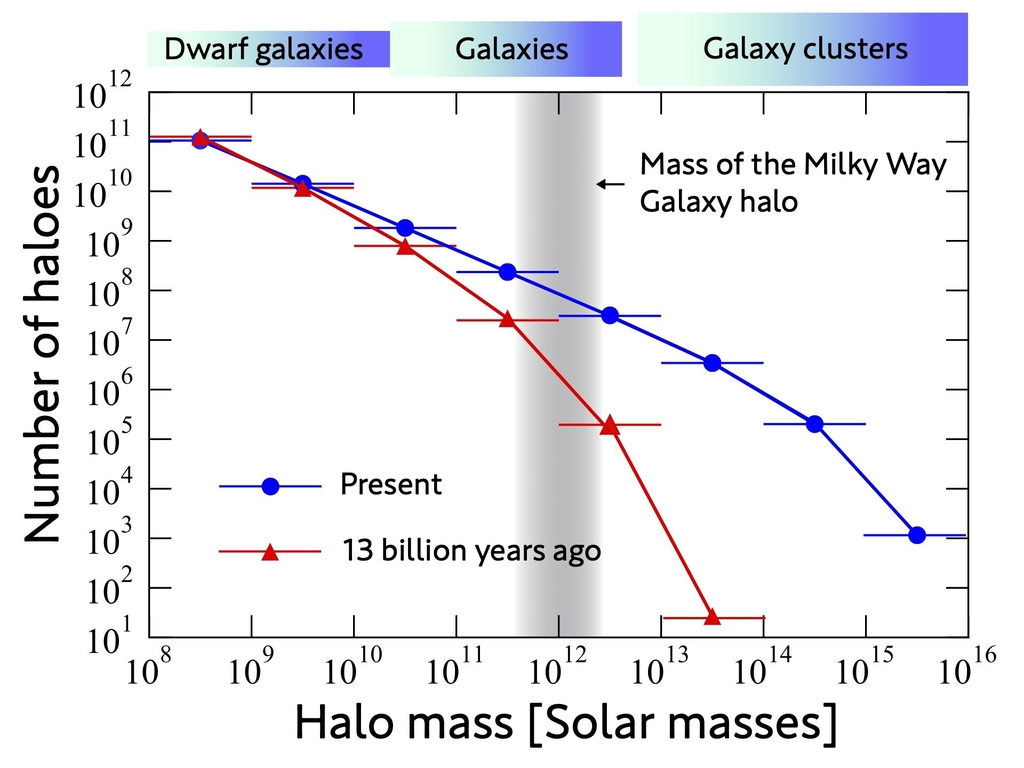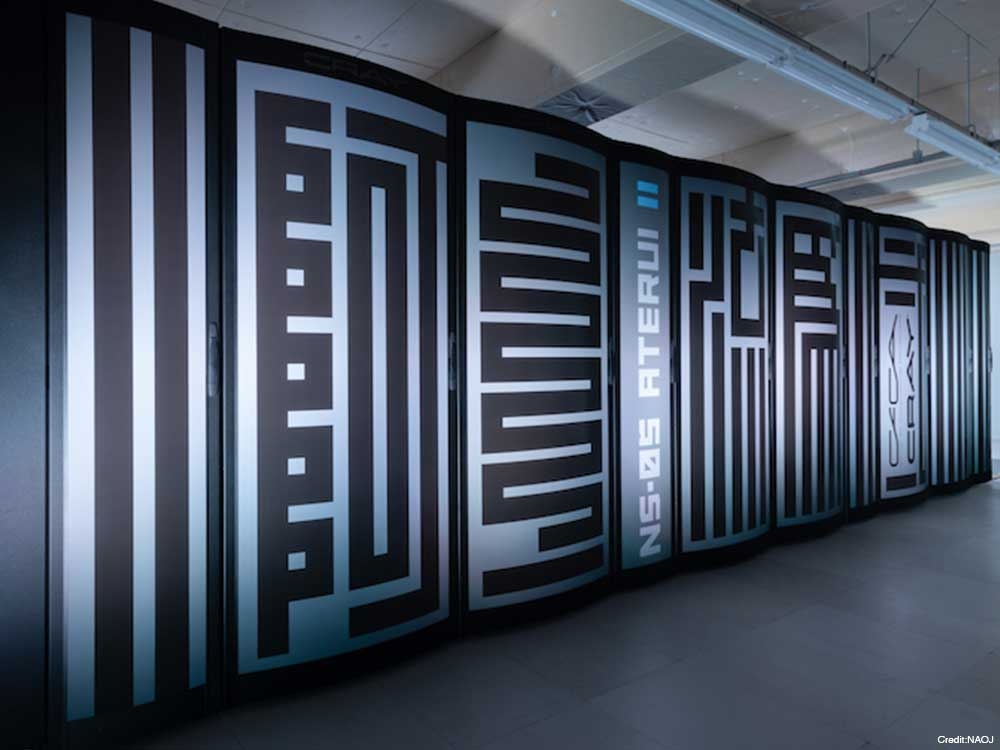Uchuu: a virtual Universe to explore

Uchuu is Japanese for “Outer Space”, and this new simulation does just that: display a gigantic, virtual Universe.
This Uchuu-verse contains an unprecedented 2.1 trillion particles (a trillion is 10 followed by 12 zeros, 1012) – although this makes Uchuu the largest simulation of its kind to date, that’s much lower than the estimated 1080 atoms of our observable Universe. And this figure doesn’t even include the non-baryonic, or dark matter, component of our Universe, which is one of the key aspects of the “outer space” studied with Uchuu. Still, the cube in which the simulation runs has 9.63 billion light-years long edges, which corresponds to ¾ of the distance between Earth and the most distant known galaxies.
Since Uchuu focuses on large-scale structures, individual stars or even planets can’t be resolved. Much more interesting though is the fact that the programme simulates its virtual Universe’s evolution since day 1, i.e., a 13.8 billion years history. With this “time machine”, researchers can for instance study how halos of dark matter influence the formation of galaxies over extended periods of time, or visualise a whole cluster at a given instant. As you can see in the image below, one finding from this simulation is that 13 billion years ago, dark matter haloes with masses comparable to that of our own galaxy had already formed.

If this all sounds like an unbelievable amount of data … you’re right. For a year, the Uchuu team used the Japanese supercomputer ATERUI II’s 40 200 processors, totalling an incredible twenty million supercomputer hours and 3 petabytes of data. That number is mind-blowing; one PB is equivalent to 1.5 million CD-ROM, or a length of 92 football fields of 1GB USB memory sticks, or for a more modern comparison 3 PBs are 894 784 853 pictures from a standard mobile phone. For those who would like to download at least parts of this virtual Universe, there is no need to worry about crashing your laptop though, since all this information has been compressed into a 100-terabyte catalogue, freely available on the cloud. On the Data Release 1 Public Data Access webpage, there are even links to tools and codes that are provided so that one can implement to study the data.

ATERUI II is holding its promise of adding a “simulation astronomy” branch to the domain of Astrophysics, which traditionally contained, on one hand, an observational astronomy side, and on the other a theoretical, mathematical one. With upcoming releases of catalogues of virtual galaxies and gravitational lensing maps in Uchuu, scientists have the opportunity to witness the formation of galaxies and clusters in a realistic virtual Universe. Moreover, Big Data projects like this one are becoming more and more common in Astrophysics, including with extremely large-scale galaxy surveys like the ESA Euclid space mission (which will also consider dark matter).
Astrophysics is entering the era of Big Data with the Uchuu simulation of the most realistic Universe ever computed.
Cover Image: Uchuu dark matter distribution, T. Ishiyama
Image Credits:
1 - Time Evolution of halos, T. Ishiyama
2 - ATERUI II, NAOJ
